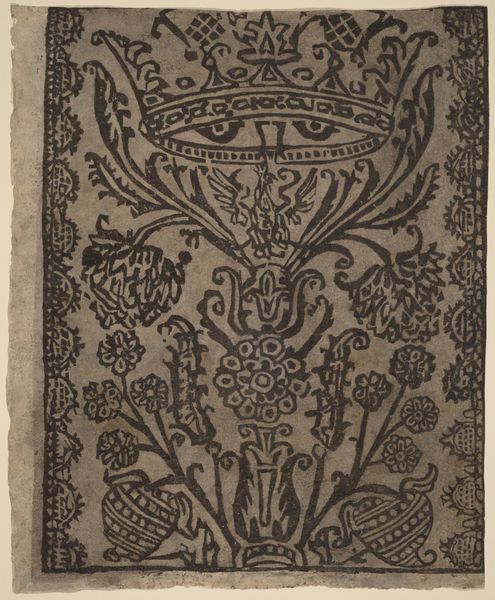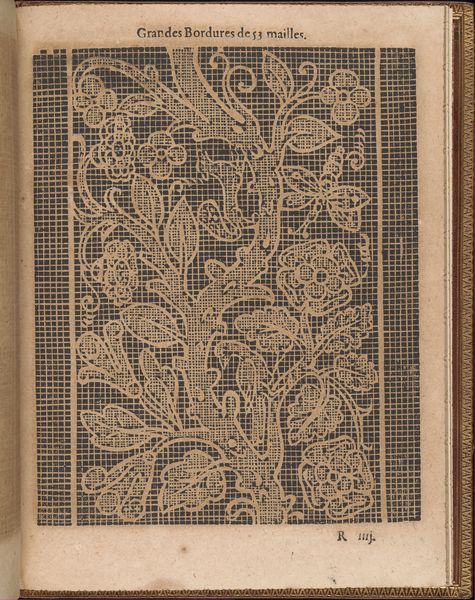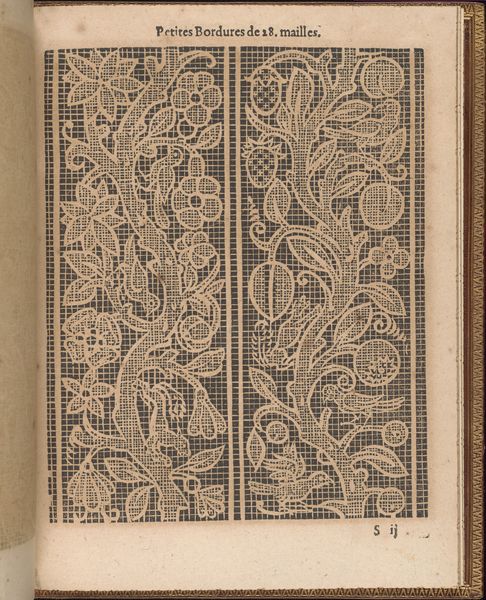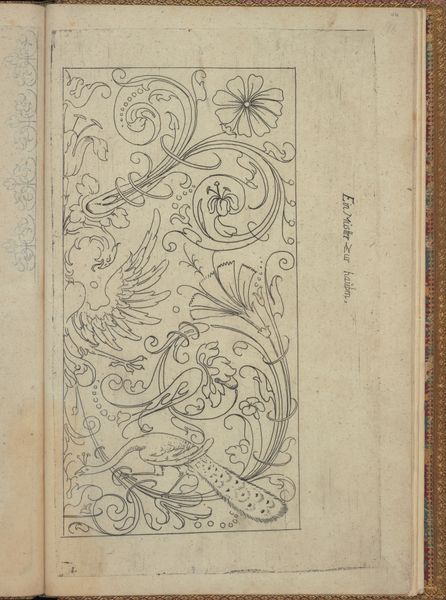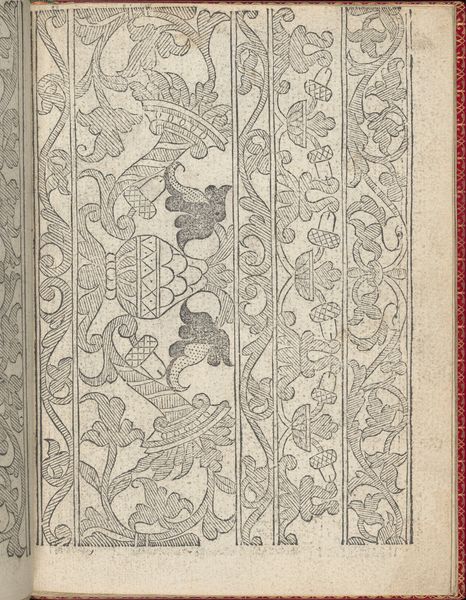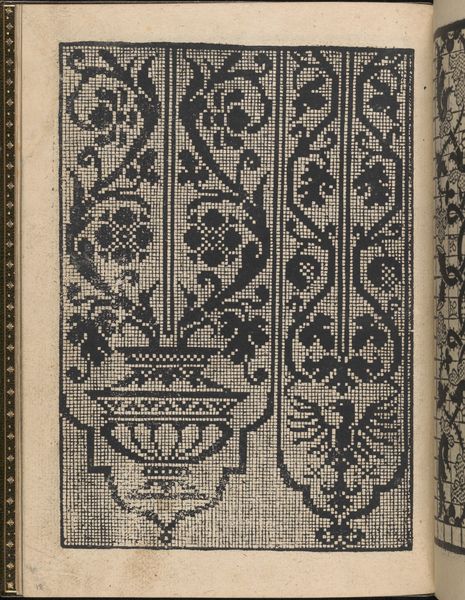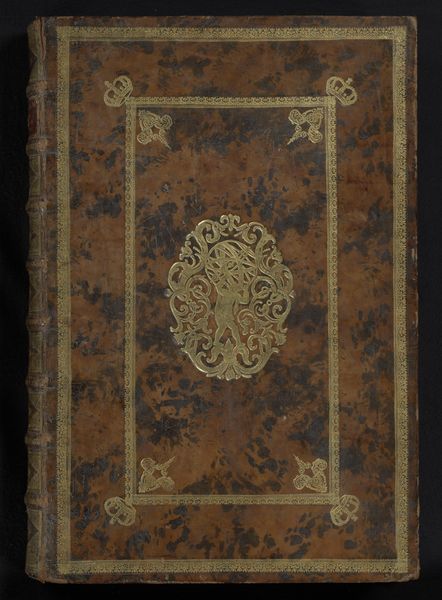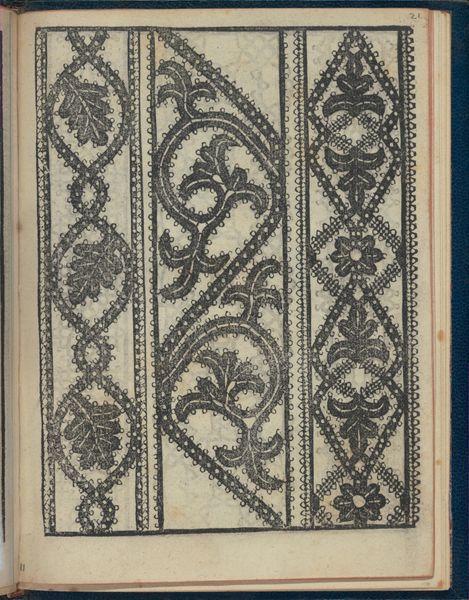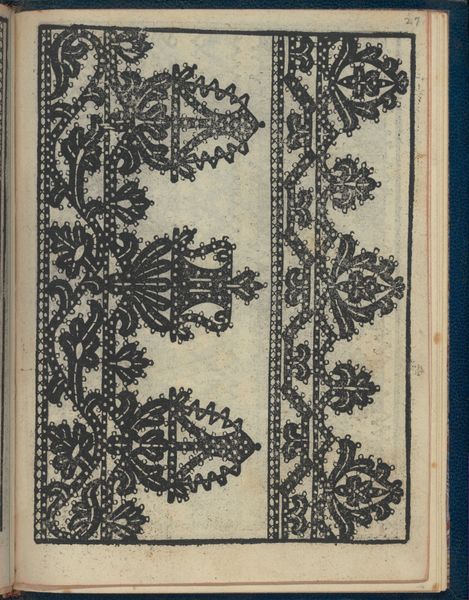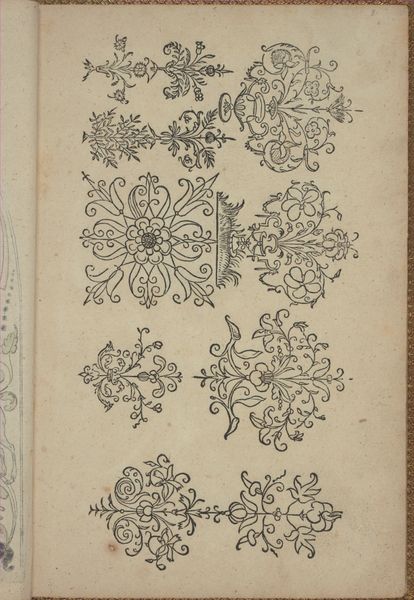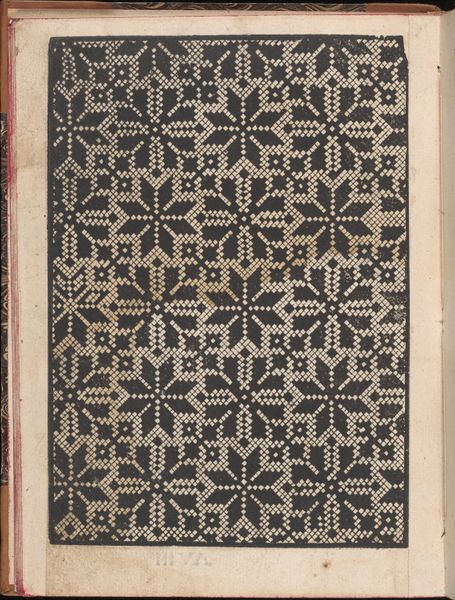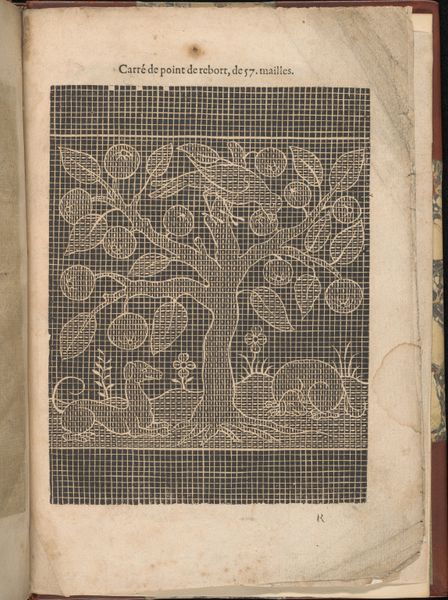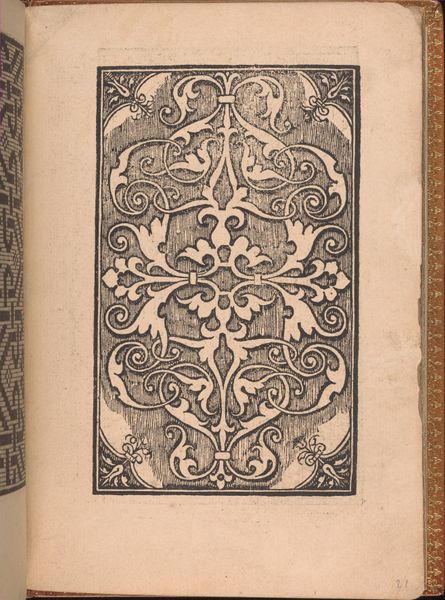
Fotoalbum samengesteld door Hospitaal Batak Instituut te Kaban Djahé op Sumatra, 1926-1929 1926 - 1929
0:00
0:00
textile, photography
#
asian-art
#
textile
#
geometric pattern
#
photography
#
organic pattern
#
geometric
#
orientalism
#
decorative-art
Dimensions: height 28 cm, width 21.5 cm, width 42 cm, thickness 3.5 cm
Copyright: Rijks Museum: Open Domain
Curator: Here we have "Fotoalbum samengesteld door Hospitaal Batak Instituut te Kaban Djahé op Sumatra, 1926-1929," an album compiled by the Batak Institute Hospital in Kaban Djahé, Sumatra. What strikes you initially about its appearance? Editor: The intricate cover design jumps out immediately. The patterns—geometric yet organic—have a certain regal quality about them, wouldn't you agree? There’s something very dignified and even a little solemn in their precise repetition. Curator: I'd agree. The composition relies heavily on symmetrical balance; the forms are organized along a vertical axis, creating that sense of formality you noticed. The batik patterns show detailed stylized birds, floral elements, and shield-like shapes. The dark blue contrasts sharply with the warm brown, further emphasizing these intricate forms. Editor: Considering it's a photo album from a hospital in Sumatra, the patterns give a window into the complex weaving of social and political elements inherent in colonialism. Sumatra under Dutch rule witnessed healthcare being introduced with underlying motives of pacification. It would be vital to consider how these patterns potentially reflect cultural preservation amid political suppression. Curator: Interesting perspective! Analyzing these details can be productive through semiotics and understanding the cultural meanings attached to specific motifs used on the textile. Looking at the formal properties, the repeated application and the detailed process needed to render a batik design demonstrates extraordinary control. Editor: This points towards an interesting contradiction—precision amidst cultural shift. One is bound to consider if the aesthetic style suggests resilience during a volatile colonial period. I can imagine its creators asserting cultural identity through meticulously crafted artistry. Curator: Indeed. Perhaps both of us are acknowledging, from different vantage points, that the book’s cover holds significance beyond being just decorative. Editor: Absolutely. The fusion of pattern and texture encourages a reflection of Sumatran history that acknowledges local resilience in the face of systemic transition and reform. It is an object steeped in nuanced perspective and complexity.
Comments
No comments
Be the first to comment and join the conversation on the ultimate creative platform.
